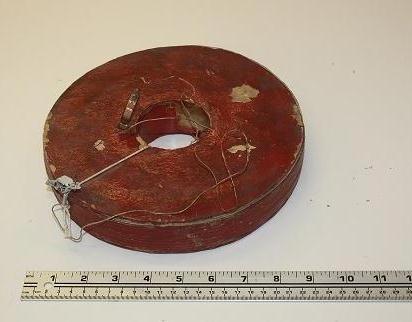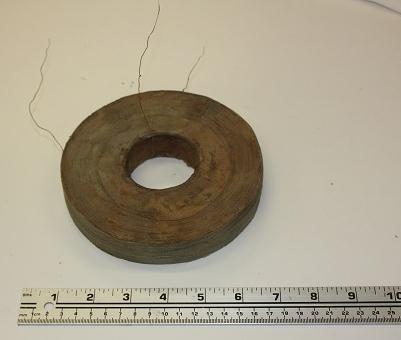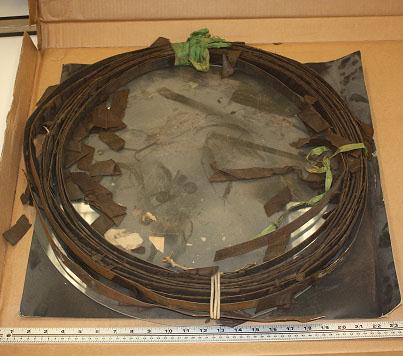One of the main aspects of many of Joseph Henry’s experiments in the field of Electricity and Magnetism is the large coils or helices of copper wire or ribbon he used. These coils were often quite large, usually containing over 1000ft of wire and sometimes weighing over 10lbs. As described by Henry in his papers, these coils were often insulated by wrapping the wires in cotton, dipping them in beeswax, and then painting.

This Henry coil or helix from the 1830s is composed of over 700 yards of copper wire, wrapped in cotton, then covered in red paint to reinforce the insulation. the sides are covered with a moderately thick layer of cardboard which has also been painted red. In total, this coil weighs 11 lbs and is representative of many of the helices Henry used in his experiments during his time at Princeton.

This later, smaller coil uses a different insulation method than the larger coil. the wire is tightly wrapped in cotton thread, which is both lighter and equally insulating compared to the insulation of the larger coil. This coil uses much thinner wire and only weights about 2lbs, but contains a similar length of wire as the larger coil.

Although made of iron ribbon, not copper, this flat coil is representative of many of many of the flat coils Henry used. This coil is composed of 28 feet of 1 inch thick iron wrapped in fabric for electrical insulation and then coiled with a diameter of about 2 feet. Many of Joseph Henry’s bigger coils of this design were composed of 60 or more feet of ribbon, with the biggest coil on record being 93 feet.
Click the picture to learn more about ribbon coils